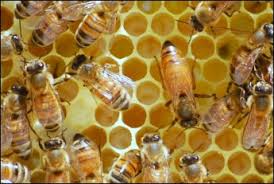The original genetic breed of bees honey bees (Apis mellifera) are native to Europe, the Middle East and Africa. Their regional environment bees have developed breeds adapted to different climatic and environmental conditions. The characteristics of the following breeds or subset of Apis mellifera vary a great deal, depending on the area of origin.
Italian queens (Apis mellifera subspecies ligustica) are usually uniformly colored, ranging from leathery brown to a golden yellow. Some strains have a black tip on the abdomen. Italian worker bees have three to five yellow bands on the abdomen. Their temperament varies from docile to moderately bad tempered. Italian bees develop populous colonies with a large brood nest.
Caucasian bees (Apis mellifera subspecies caucasia) have queens that are usually black, but some have yellow or red coloring on the side and underneath the abdomen. Workers are grey to black, depending on age. Silver-grey bands on young workers are bands of dense hairs which wear off with age, revealing the dark color beneath. Caucasians are docile bees that form strong colonies.
The Caucasian bees frequently winter as small colonies, breeding very rapidly in early spring. They are better suited for cooler conditions. Their whiter wax on new combs is favored for comb honey production.
Carniolan bees (Apis mellifera subspecies carnica) are similar in color and temperament to Caucasians. Queens are generally brown with yellow bands on some segments. Workers are grey, turning black with age. They can be the most docile of the three races, but are known to having a strong swarming tendency.
Carniolan bees winter as small colonies, breeding fast in early spring to form large colonies in summer.
Hybrids bees (Apis mellifera subspecies da-kine) a combination of races of honey bees. Note that because of the manner in which queens mate, most hives have some degree of crossing between races.

